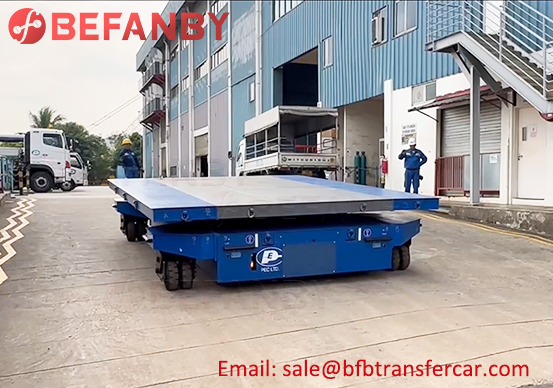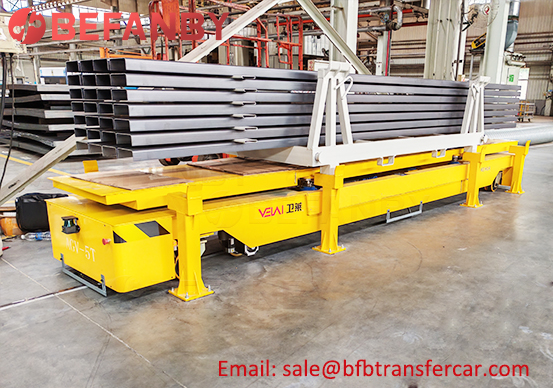Visually-Guided Outdoor AGV: Leading a New Era Of Intelligent Logistics
In recent years, with the rapid development of intelligent manufacturing and logistics automation, AGV technology has been continuously innovating. Among them, visually-guided outdoor AGVs are becoming an important driving force for intelligent logistics in the era of Industry 4.0 with their unique advantages. Today, BEFANBY will take you to have an in-depth understanding of the core advantages of visually-guided outdoor AGVs and how it can bring revolutionary changes to the industry.
1. High Flexibility & Adaptability To Complex Environments
Traditional AGVs usually rely on magnetic strips, rails or reflectors for navigation, while visually-guided AGVs perceive the surrounding environment through cameras and advanced sensors without laying fixed paths. This flexibility enables it to easily cope with complex and changeable outdoor terrain and scenes, and is suitable for a variety of scenarios such as warehousing logistics, port transportation, and park distribution.
2. Reduce Costs & Improve Economic Benefits
Visually-guided AGVs do not need to install and maintain expensive magnetic strips, rails or laser reflectors, significantly reducing infrastructure costs. At the same time, its autonomous navigation capability reduces dependence on manual intervention, further reduces operating costs, and brings higher economic benefits to enterprises.
3. Strong Environmental Adaptability
The outdoor environment is complex and changeable, and factors such as lighting, weather and terrain put forward higher requirements on the navigation ability of AGV. Through advanced image processing algorithms and sensor fusion technology, visual navigation AGV can adapt to different lighting conditions, weather changes and terrain undulations to ensure stable operation.


4. High-Precision Positioning & Intelligent Obstacle Avoidance
Combined with SLAM (Synchronous Localization and Mapping) technology, visual navigation AGV can achieve high-precision positioning and real-time map construction to ensure the accuracy of navigation. In addition, through real-time image analysis, AGV can identify dynamic obstacles and intelligently avoid obstacles, greatly improving safety and reliability.
5. Easy To Expand & Upgrade
The software system of visual navigation AGV can be upgraded through remote updates, easily adapting to new task requirements or environmental changes. This scalability enables it to serve the diverse needs of enterprises for a long time and extend the service life of equipment.
6. Environmental Protection & Energy Saving, Helping Sustainable Development
Visual navigation AGV is usually powered by electricity, with zero emissions during operation, which is in line with the development concept of green environmental protection. At the same time, its efficient energy utilization rate also helps enterprises reduce energy consumption costs and help achieve sustainable development goals.
Conclusion
Visually guided outdoor AGVs are becoming an important technological breakthrough in the field of intelligent logistics with their high flexibility, low cost, strong adaptability and intelligence. Whether it is warehousing logistics, port transportation, or park distribution, visually guided AGVs can provide enterprises with efficient and reliable solutions, helping the industry move towards an intelligent and automated future.




